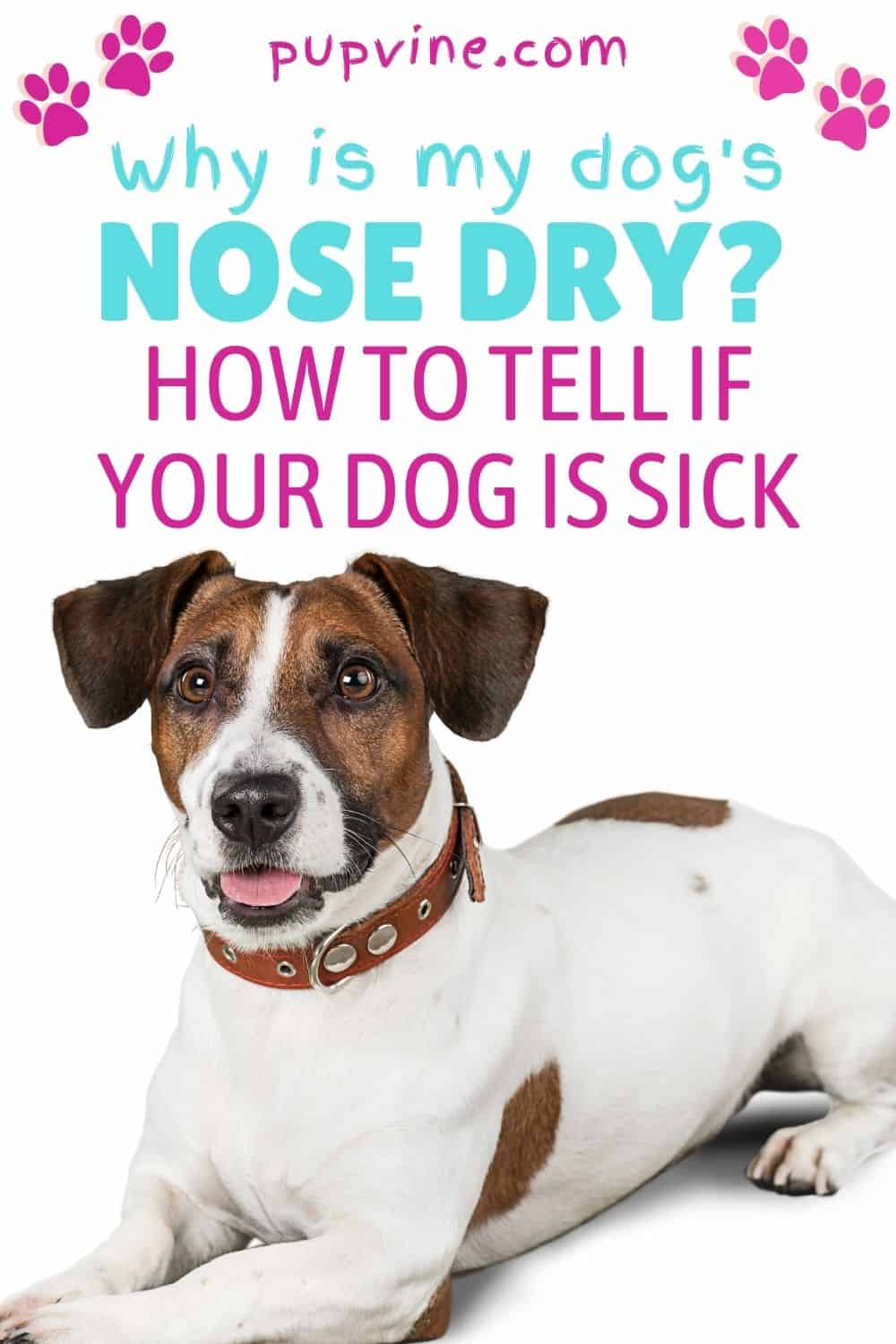Dogs bring so much joy and laughter into our lives. They melt our hearts with their love, affection, and loyalty. And they give us sleepless nights when they get sick!
Few things cause pet owners as much stress and anxiety as when we suspect or realize that our furry friends are not okay. One minute everything seems fine, and the next, we see them acting strangely or displaying worrying symptoms.
You could be relaxing at home, petting your precious pooch as you watch TV. Your hand moves over their snout, and you notice something different. You might ask yourself, why is my puppy’s nose dry? Does it mean that they’re sick? Is it something serious?
These questions are perfectly natural because you love your dog. But before you panic, take a look at this guide which explains all the reasons why dogs sometimes have dry noses.
It isn’t always bad news, although it makes sense to be aware of the signs, just in case – the same way as if you might want to be wary if your dog’s ears are cold.
Why Are Dogs’ Noses Wet?
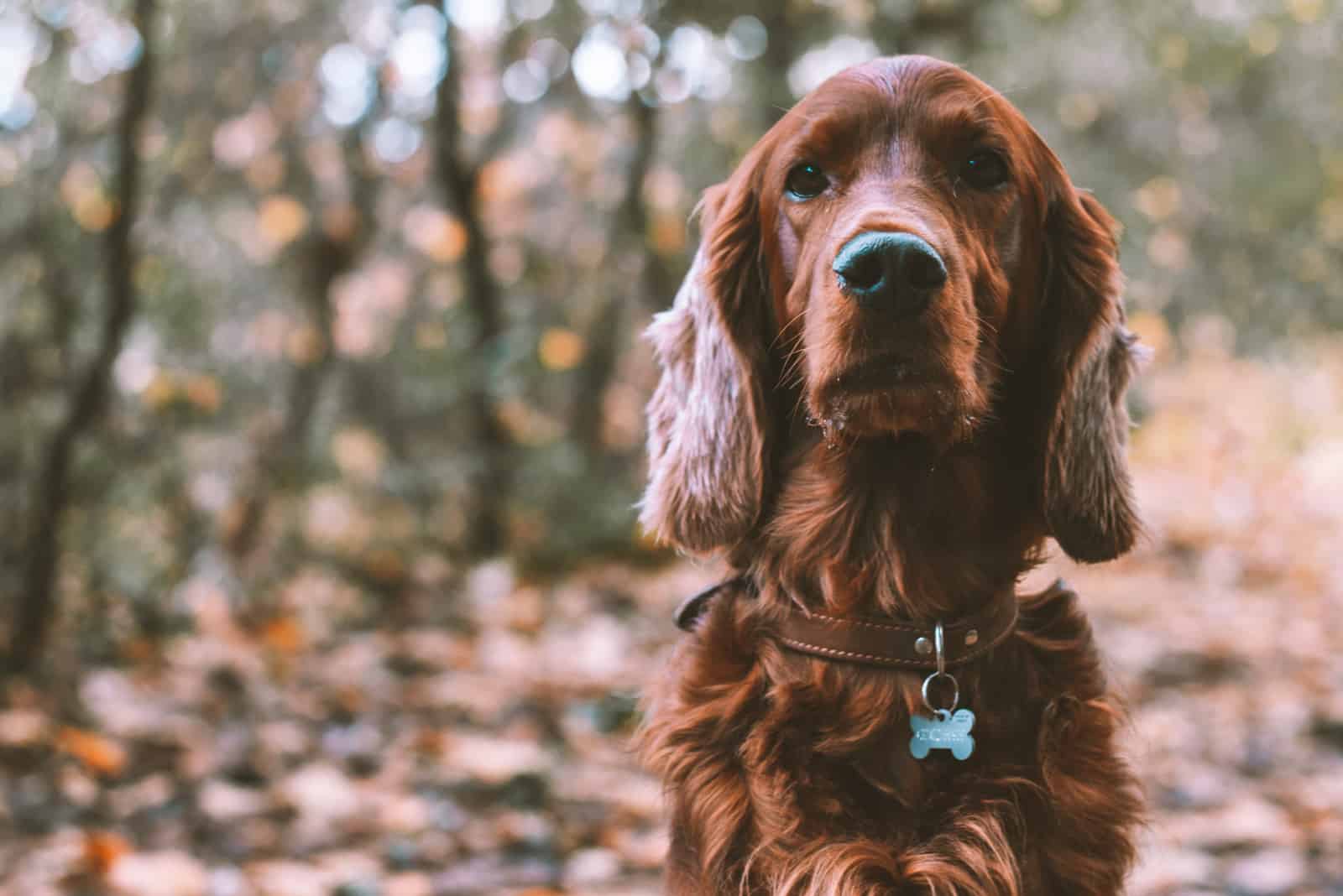
We’ll start by explaining why that nose is usually so cold and wet, perfect for poking into your ear first thing in the morning!
That nose is a fantastic tool. Dogs see the world very differently from the way we do. They see with their eyes, but they also ‘see’ with their noses! They have an amazing sense of smell that is far superior to our own, allowing them to build a vivid picture of the world around them, even sensing things that have happened some time previously.
Various claims have been made as to how much better their sense of smell is than ours, but recent research suggests that they could be as much as 100 million times more sensitive!
In addition to this, the part of the brain devoted to smell is forty times larger than that found in humans, which illustrates just how important a dog’s nose is to its everyday life.
The secret behind this super-sniffer lies in the special glands inside the nose, which secrete a thin layer of mucus that lines the nostrils. This enhances their ability to gather and absorb scent particles, which is why their olfactory organ is so much more advanced than our own.
Dogs have an in-built instinct to lick their noses (and sometimes your face, too), which helps keep them moist. They do this for two reasons: to keep them clean and boost their sense of smell even further.
The first reason is pretty straightforward, as dogs are always sticking their noses into everything. They pick up dust, dirt, pollen, food, etc., and this needs to be cleaned off. The second reason is more complicated and involves something called Jacobson’s organ. When dogs lick their noses, they gather some of the mucus with scent particles trapped inside. This passes over Jacobson’s organ situated on the roof of their mouth, which is designed to enhance smells.
Dogs’ noses play a vital role in the way they perceive the world. This means that few dogs will want to miss out on any important information floating around in scent particles, so they learn to lick their noses constantly and automatically!
To add to the wetness, the olfactory glands also produce a watery fluid that evaporates when the dog becomes too hot, which helps the cooling process.
Finally, if your loyal companion loves the outside world as much as most other dogs, then they’ll have their nose stuck in wet grass, ponds, rivers, damp leaves, puddles, and so on, which is another reason why their noses are moist for the most part.
That nose is rarely dry, so it is little wonder that we worry if we notice that it is dry, especially if it also seems warm or cracked.
Why is my dog’s nose dry?
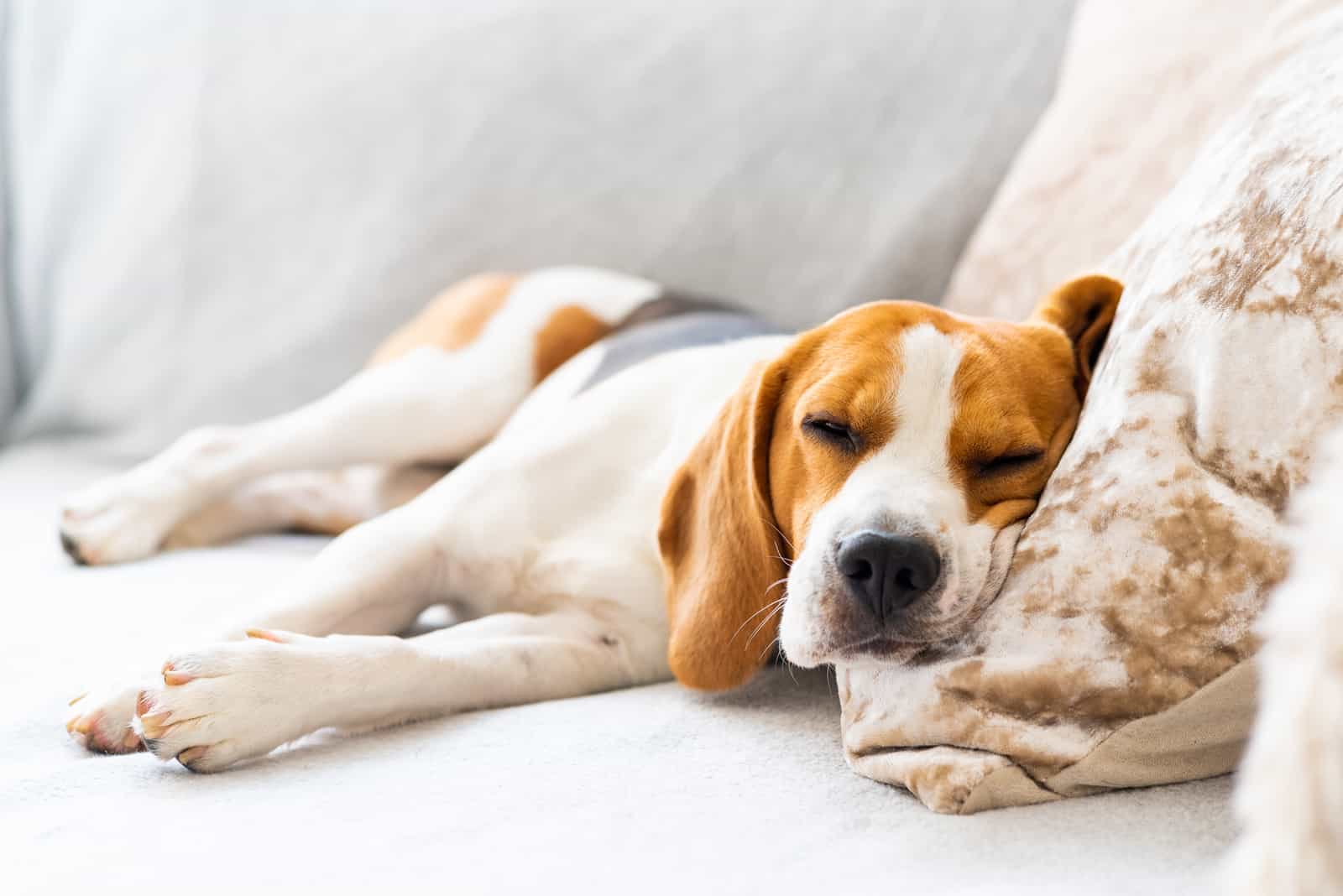
There’s a widely-held belief that all healthy dogs have wet noses and that a dry nose means that your dog is sick.
The trouble is, it simply isn’t always true! Sick dogs can still have wet noses, and your dog can be fit and healthy but still have a dry nose at times.
Let’s take this a step further by examining some of the causes of dryness:
• Sleeping – has your dog just woken from a nap? Dogs rarely lick their noses while sleeping, which can cause them to dry out. Once they’ve been awake for a few minutes, you’ll see them start to lick at that nose to get it moist again. They’ll probably head to their water bowl too.
• Heat – were they lying near a fire, heater, or warm air vent? Sources of heat can easily dry their nose temporarily. Once again, they’ll probably start to lick that nose once they are up and about and help themselves to a drink of water.
• Sunlight – when your dog is out in bright sunshine, you need to keep a close watch on that delicate nose, especially if it is pink or pale. There are ways to protect their noses from harsh sunlight, such as using sunscreen.

Photo from @allaboutdogsshow
• Cold, windy weather – this becomes worse when combined with the fact that you’ll probably have your central heating on indoors. In the same way that your lips become chapped, your dog’s nose can become cracked and dry during the colder months.
• Age – as dogs get older, they often suffer more from a dry, cracked nose. The main reason for this is that they tend to sleep more, and, as we have learned, they don’t lick their noses while sleeping. This means that there will be long periods where their nose is dry, which will take longer to moisten once they wake up.
• Breed of dog – certain dog breeds are more prone to suffering from a dry nose. These are usually the brachycephalic breeds, such as the Pug, Bulldog, and Lhasa Apso. This essentially means ‘short head,’ describing their flattened muzzle and face. As cute as it is, this causes many problems, including the fact that many of these dogs can’t easily lick their noses to keep them moist. Lhasa Apsos, in particular, suffer from blocked tear ducts, which makes their noses dry out.
These are all pretty straightforward reasons and should be of some comfort. In all probability, when you notice that your doggie pal has a drier nose than usual, you’ll be able to ascribe it to one of these. None of them are serious issues, with the possible exception of sunlight, which we’ll explore further in a moment.
Now we’ve examined the less serious causes of a dry nose in dogs, it makes sense to explore others that could be a sign of a health issue that will need medical attention.
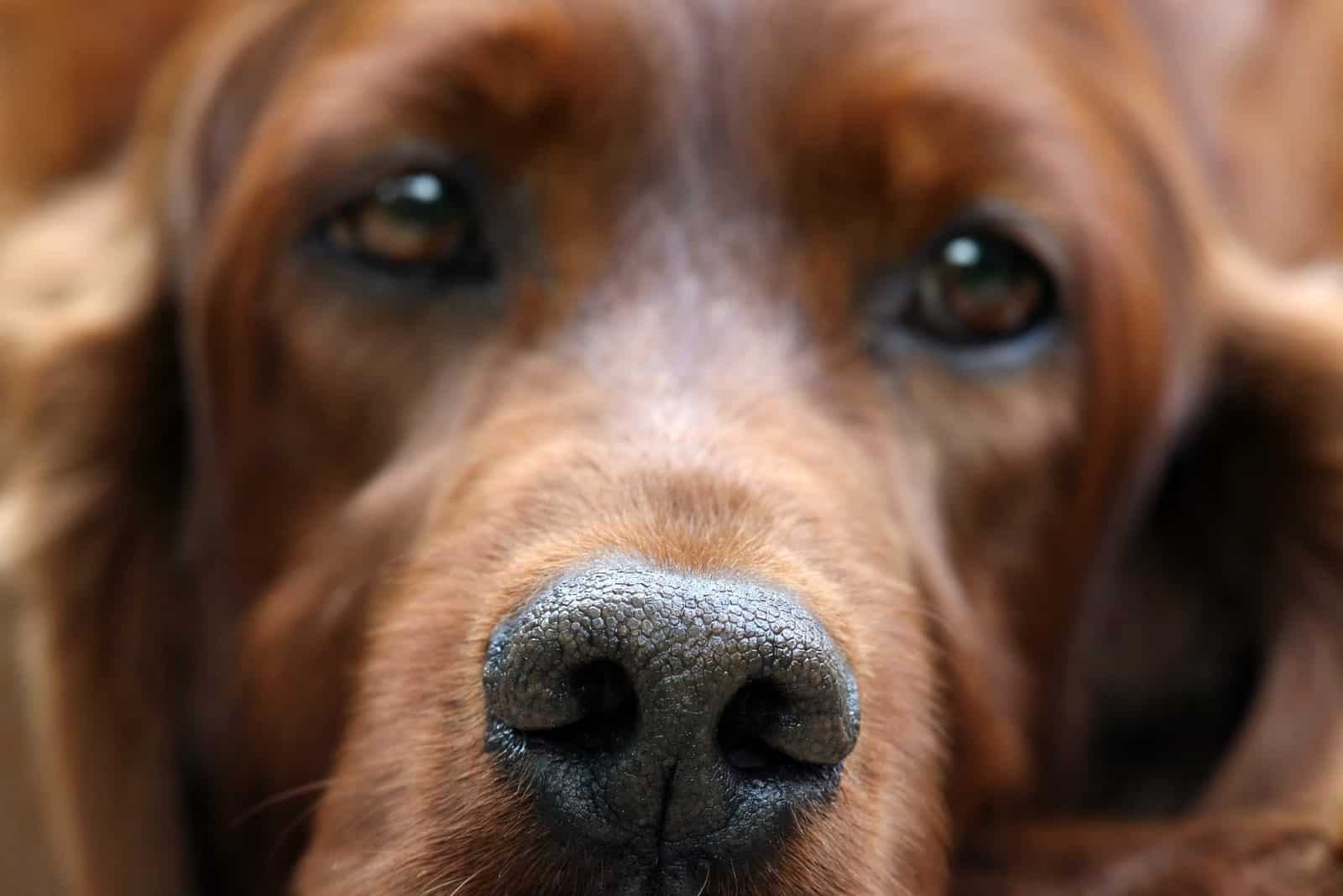
• Autoimmune disease – conditions such as pemphigus and lupus can change the surface of the nose, leading to a dry, crusty nose with cracked, bleeding skin. These disorders can be managed and treated using immunosuppressive medications.
• Allergic reaction – not all allergies are serious, of course, but you should always investigate any possible allergens in case your dog has an extreme reaction that can lead to anaphylactic shock, which can be fatal if not treated quickly.
• Hyperkeratosis – this is a condition that causes the skin on the nose (or the paws) to thicken due to the dog producing an excess of keratin. The skin hardens and becomes crusty, which can be very painful for the dog. It can be linked to other conditions, such as pemphigus, or caused by parasites, distemper, or an inability to absorb zinc.
• Fever – a dog’s dry nose is sometimes an indication that their body temperature is too high. A fever is often a sure sign that your dog is fighting infection, whether bacterial, fungal, or viral. Alternatively, the dog might have ingested toxins or be suffering from inflammation somewhere within its body. A slight fever following vaccinations is quite normal and should ease within 24 hours. For anything else, you should contact your vet for advice, as a fever of 41.1°C (106°F) or above can be fatal.
Find more information in our article on dog’s temperature chart.
• Sunburn – as mentioned above, strong sunshine can dry out a dog’s nose. In severe cases, this can cause sunburn, which is not only painful but can also result in cancerous tumors forming at a later stage.
• Dehydration – mild dehydration, though never ideal, is rarely serious and easily remedied by a bowlful of fresh water. However, dehydration can be a devastating and distressing condition. As well as having a dry nose, the dog will become lethargic and lose its appetite. Their saliva may become thick, and their gums sticky. They may start vomiting, sometimes accompanied by diarrhea. One of the best indicators of dehydration is skin-elasticity, as well-hydrated skin springs back into position quickly when pulled and released.
While these might look alarming, they can all be avoided, treated, or managed using common sense, care, and medical attention.
One fact that shouldn’t be overlooked is that any cracked and dry skin might allow infections to take root. Watch for any nasal discharge or odd-colored mucus, especially if it smells bad. Your dog will most likely be scratching at their nose, which will cause them further pain and discomfort. If you spot these signs, then get your furry friend to the vet!
How To Treat A Dry Dog Nose
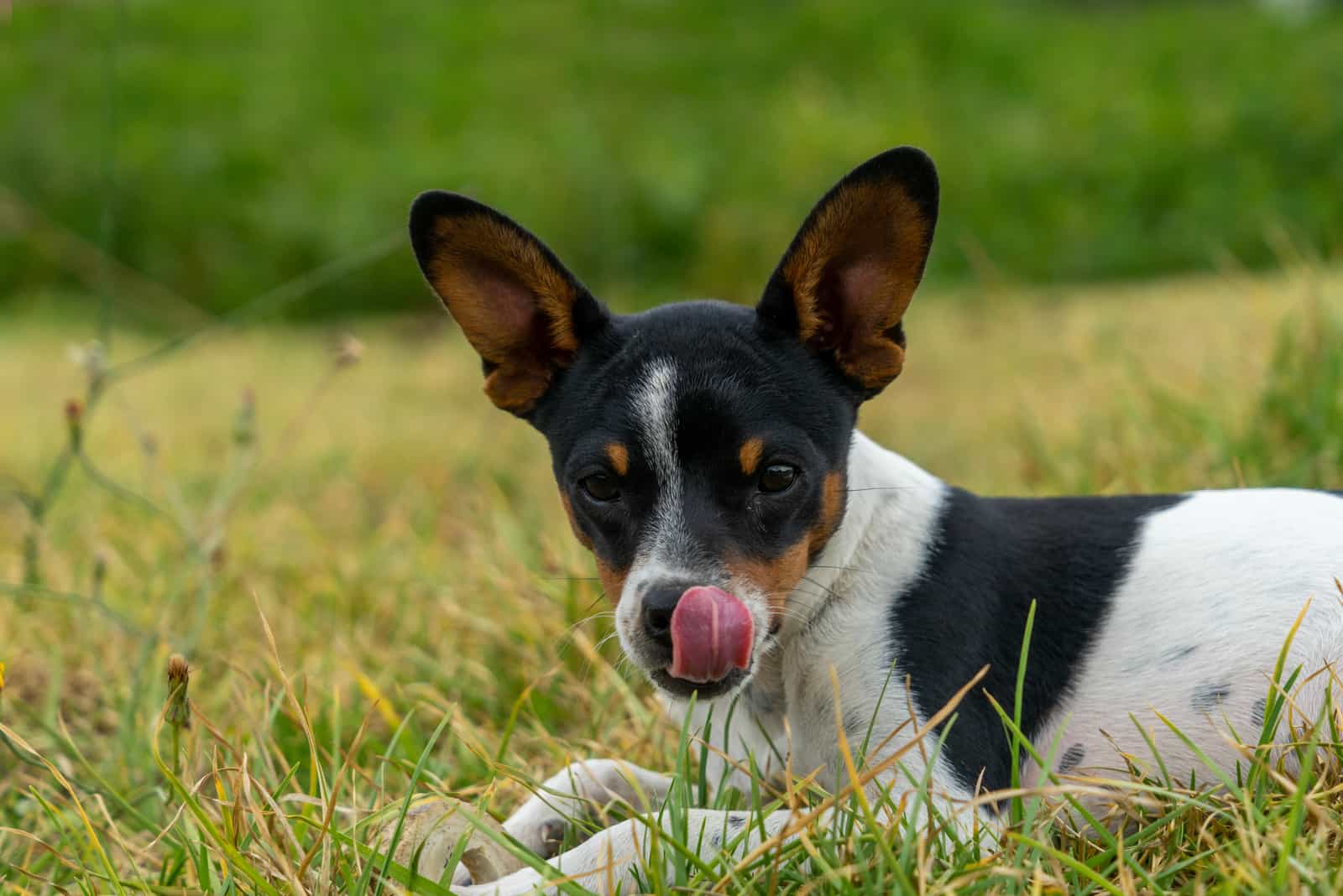
So, now you know what to look for, it’s time to find out what to do about it!
If you’ve been asking, why is my dog’s nose dry and crusty? Then the answer is probably here. The first thing to do is to check the obvious: have they been asleep? Were they lying by the fire? Are they an older dog? Are they one of the brachycephalic breeds?
To reduce your pup’s chances of having a dry, cracked nose, you can try using lotion or nose balm. However, because they will be licking their nose (even more so once you apply the lotion!), it must be one that is safe for consumption. Some people use natural products such as coconut oil, which is great but has its drawbacks. Despite being an excellent moisturizer, it tends to wear off pretty quickly – probably because your pooch likes the taste! It needs to stay on for at least 10 minutes if it’s going to have any effects.
Alternatively, you can opt for something like Snout Soother. This specially formulated lotion moisturizes the skin and acts as a sunscreen as well as protecting against weather and wind extremes. As with any lotions, the sunscreen should be pet-friendly and non-toxic, as they are likely to lick it at some stage. As well as using it on their nose, you could apply it to other sensitive areas like the belly and paw pads.
Obviously, Dog owners need to be certain that the dry nose isn’t a symptom of one of the more serious conditions listed above. The best way to discover this is to check for any accompanying symptoms, such as a fever, vomiting, loss of appetite, lethargy, etc., and to take your dog to the vet for regular check-ups.
To reduce the risk of illness and disease in your dog, you should ensure that they have a healthy diet and plenty of outdoor exercise. Always provide them with good quality dog food and make sure their water bowl is filled regularly with fresh, clean water.
You might want to replace store-bought dog treats with healthier alternatives, such as tuna, paprika, brussels sprouts, or even durian.
Grooming, bathing, and cuddling time all provide great opportunities for you to check your dog over for any signs that something is wrong. Give that nose a feel to see whether it’s warm, cold, wet, or dry, taking into account all the advice and information above.
In general, your pup’s nose should be cool and wet, but it won’t always be that way. You should check it every once in a while, as it’s a pretty good way of keeping track of their health but should never be taken at face value.
Read Next:
• 12 Explanations Why Do Dogs Noses Turn Pink
• 13 Home Remedies For Dog Drooling — Stop The Slobber
• A White Spot On Dog’s Nose Requires Shampoo And A Hose
